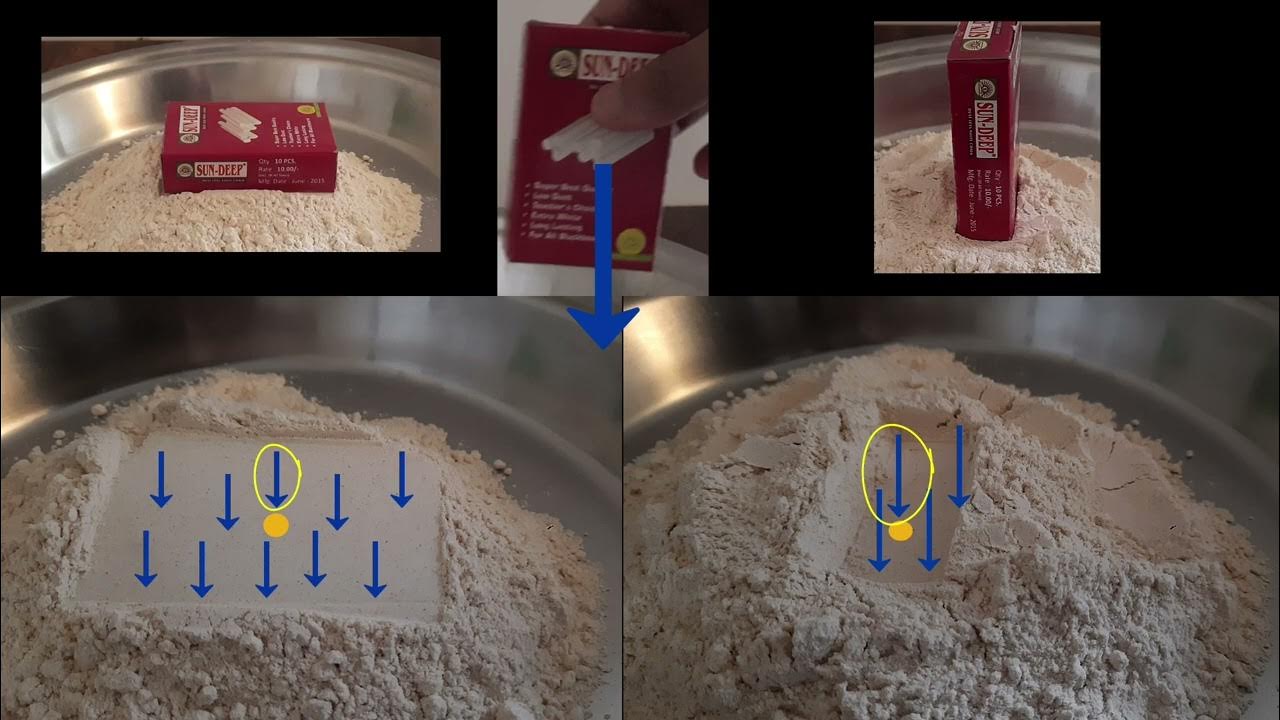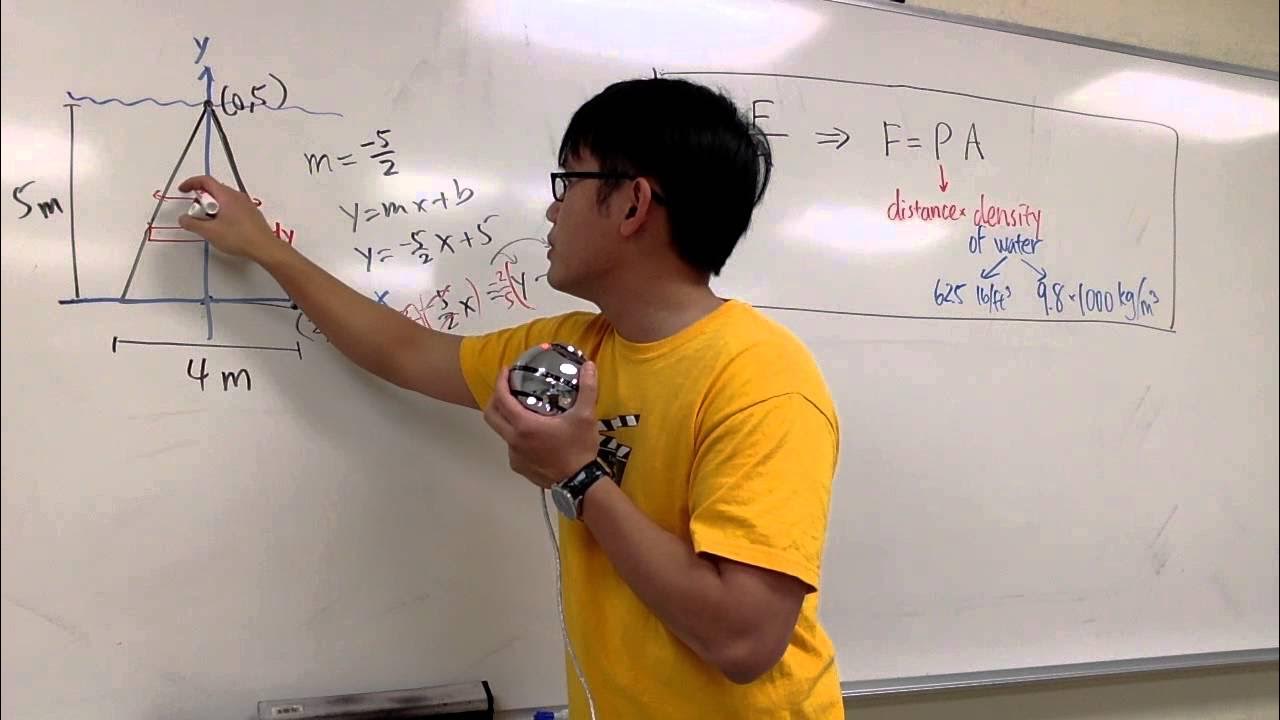Pressure & thrust. | Gravity | Physics | Khan Academy
TLDRThe video script explores the concept of pressure, explaining how the concentration of force over an area affects its ability to puncture or cut. It uses everyday examples like a nail and a knife to illustrate how sharp objects concentrate force onto a small area, resulting in high pressure. The script then applies this concept to explain why a bed of nails doesn't hurt when distributed evenly and why military tanks use chains to distribute their weight and reduce ground pressure. The mathematical calculation of pressure as force divided by area is introduced, along with the unit Pascal. The importance of force being perpendicular to the surface to exert pressure is emphasized, with such force sometimes referred to as thrust.
Takeaways
- 🔍 Understanding Pressure - Pressure is the concept that explains how concentrated a force is, and it is crucial in determining whether a force can puncture or cut through something.
- 🛌 Bed of Nails - A bed full of nails doesn't hurt because the force of a person's weight is distributed over many nails, resulting in low pressure on each nail and thus, less pain.
- 🔨 Force and Area - The amount of force applied and the area over which it is applied determine the pressure. A smaller contact area results in higher pressure, while a larger contact area results in lower pressure.
- 🍅 Sharp Objects - Sharp objects like knives can easily cut through things because the same force is concentrated over a very small area, creating high pressure.
- 🚜 Military Tanks and Chains - Tanks use chains to increase the contact area with the ground, thereby reducing the pressure and preventing the tank from sinking into the soil.
- 📐 Pressure Calculation - Pressure (P) is mathematically calculated as the force (F) divided by the area (A), expressed as P = F/A.
- 🌐 Units of Pressure - The standard unit of pressure is Newtons per square meter, also known as Pascals, after the French scientist Blaise Pascal.
- 🔄 Force Distribution - When the same force is applied over a larger area, the pressure decreases, making it harder to puncture or cut through materials.
- ✂️ Cutting and Pressure - To effectively cut or puncture something, one needs not only force but also high pressure, which means the force must be concentrated.
- 📖 Perpendicular Force - Pressure only applies when the force is perpendicular to the surface. This perpendicular force is sometimes referred to as thrust in textbooks.
- 🛏️ Comfort of Pillows - Pillows are comfortable because they distribute the force of our head over a larger area, resulting in lower pressure compared to sleeping on a hard surface.
Q & A
What is the main concept explained in the video?
-The main concept explained in the video is pressure, which is the concentration of force on a specific area.
Why doesn't sleeping on a bed of nails hurt if there are many nails?
-Sleeping on a bed of nails doesn't hurt when there are many nails because the force of the person's weight is distributed over a larger area, reducing the pressure on each nail and thus causing less pain.
How does the number of nails affect the pressure exerted on a person sleeping on a bed of nails?
-The fewer the nails, the higher the pressure on each nail because the same force (the person's weight) is concentrated over fewer points, which can cause pain or injury.
Why do military tanks have chains instead of just wheels?
-Military tanks have chains to increase the contact area with the ground, thereby reducing the pressure and preventing the tank from sinking into soft or muddy terrain.
What is the mathematical formula for calculating pressure?
-The mathematical formula for calculating pressure is P = F/A, where P is pressure, F is force, and A is the area over which the force is applied.
What are the units of pressure?
-The units of pressure are newtons per meter squared (N/m²), which is also referred to as a Pascal (Pa), named after the French scientist Blaise Pascal.
Why is it important for force to be perpendicular when calculating pressure?
-Force must be perpendicular when calculating pressure because only the component of force that is perpendicular to the surface can exert pressure. Parallel forces do not contribute to pressure as they do not push against the surface.
What is the term used in textbooks for force that is perpendicular to a surface?
-In textbooks, force that is perpendicular to a surface is often referred to as thrust.
How does the concept of pressure explain the comfort of a pillow compared to a hard brick?
-A pillow is comfortable because it has a larger surface area that distributes the force of your head, creating low pressure. A hard brick, on the other hand, has a small contact area, leading to high pressure and discomfort.
What happens when you try to puncture a surface with a blunt object compared to a sharp one?
-A sharp object can puncture a surface more easily because it concentrates the same amount of force into a smaller area, resulting in higher pressure. A blunt object has a larger contact area, spreading the force over a wider region, which leads to lower pressure and makes it harder to puncture.
How does the video script illustrate the principle that 'pressure is force over area'?
-The video script uses everyday examples like a nail and a tomato, and a bed of nails, to demonstrate that when the same force is applied over a smaller area (like a sharp nail or a bed with many nails), the pressure is higher and can lead to cutting or puncturing. Conversely, when the force is spread over a larger area (like using a finger instead of a knife, or a tank with chains), the pressure is lower and less damage is done to the surface.
Outlines
🔍 Introduction to Pressure and its Effects
This paragraph introduces the concept of pressure by using everyday examples such as sleeping on a bed of nails and military tanks with chains. It explains that pressure is about how concentrated a force is and demonstrates this through scenarios like hammering a nail and chopping a tomato. The importance of the contact area in determining pressure is highlighted, showing that a smaller contact area results in higher pressure, which is necessary for actions like cutting or puncturing. The mathematical formula for pressure (P = force/area) is introduced, along with its units (newtons per meter squared or Pascal).
🛠️ Applications of Pressure: Bed of Nails and Tanks
This section delves into the applications of pressure by revisiting the examples of the bed of nails and the military tank. It explains why a bed of nails with many nails doesn't hurt due to the distribution of force over a larger area, resulting in lower pressure. Conversely, fewer nails would concentrate the force, increasing pressure and causing pain. The need for tank chains is also discussed, illustrating how they increase the contact area with the ground, thus reducing the pressure exerted by the tank's weight and preventing it from sinking into the soil.
💭 Final Thoughts on Pressure and Comfort
In the final paragraph, the concept of pressure is related to everyday comfort, contrasting the experience of sleeping on a soft pillow versus a hard brick. The explanation ties back to the idea that a larger contact area, as with the pillow, distributes force more widely, leading to lower pressure and increased comfort. This example reinforces the importance of pressure in our daily lives and provides a relatable conclusion to the discussion on pressure.
Mindmap
Keywords
💡Pressure
💡Concentration of Force
💡Contact Area
💡Force
💡Pascal
💡Bed of Nails
💡Military Tanks
💡Perpendicular
💡Thrust
💡Comfort
💡Area
Highlights
Exploring the concept of pressure and its applications in everyday scenarios.
Understanding why sleeping on a bed of nails doesn't hurt with the help of pressure concept.
The role of an assistant hammering nails in a demonstration related to pressure.
Military tanks use chains to distribute weight and lower ground pressure.
The importance of the concentration of force in everyday tasks like hammering a nail or chopping a tomato.
Pressure is defined as how concentrated the force is over an area.
Mathematical calculation of pressure as the force divided by the area.
Units of pressure explained as newtons per meter squared, also known as Pascal.
The effect of the number of nails on the pressure exerted on a body in a bed of nails scenario.
How reducing the number of nails can actually increase pressure and cause discomfort or pain.
Tanks use chains to increase the contact area with the ground, thus reducing pressure.
The significance of perpendicular force in applying pressure, also known as thrust.
Practical applications of pressure in understanding the comfort of sleeping on different surfaces.
The concept of pressure helps explain why sharp objects can puncture or cut other materials.
The role of contact area in determining the effectiveness of force application.
Pressure can be used to predict the outcome of force application in various situations.
The importance of understanding pressure in engineering and physics.
The educational value of this concept in problem-solving and real-world scenarios.
Transcripts
5.0 / 5 (0 votes)
Thanks for rating:





